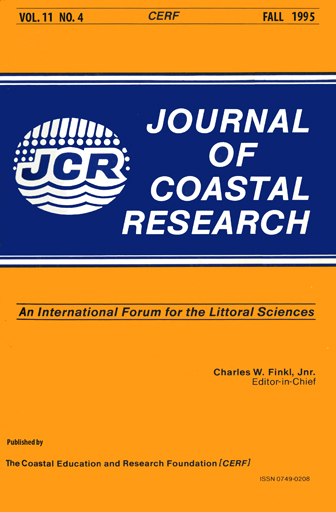The Transgressive Barrier Model: An Alternative to Two-Dimensional Volume Balanced Models
Keywords:
Barrier island, beach erosion, equilibrium profile, ramp, relative sea level rise, shoreface, transgression.Abstract
As sea level rises, barrier islands generally transgress; sediments are eroded from the beach and shoreface and deposited in other shore areas. In turn, two-dimensional volume balanced models have been constructed to predict long-term fates of shoreline erosion and of volumetric change in shore compartments. These models have assumed that as barriers transgress sediments eroded from a beach and shoreface are deposited only in shore normal compartments; displaced sediments are not incorporated into the littoral drift. The transgressive barrier model, an alternative model to the two-dimensional volume balanced models, is presented as a set of equations which was applied to a segment of the Long Island, New York, barrier shoreline. For a 2.7 mm/yr relative rise in sea level, the model predicted a beach erosional rate of 0.7 m/yr, which is consistent with observed rates. In addition, the model reasonably showed that the sediment volume eroded from the transgressing beach and the shoreface was greater than the sum of that deposited in shore normal compartments and that the remaining amount was removed by littoral currents. At the study site, it appears that a relative rise in sea level in conjunction with wave and current action is the primary factor that governs long-term rates of shoreline erosion and of the gross littoral drift. Therefore, the universality of the two-dimensional volume balanced model appears not to be true.Downloads
Published
1995-10-17
Issue
Section
Articles


